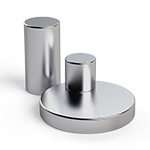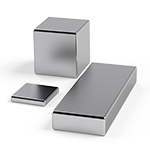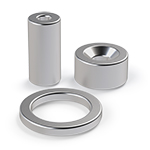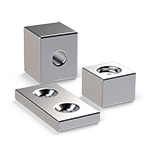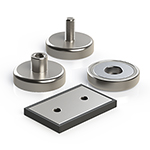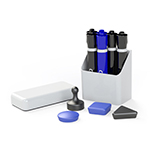In our quest for a well-organized living or working space, we often come across innovative solutions that make a significant difference. One such solution is magnetic strips, which offer a versatile and efficient way to organize your surroundings. They can be a game-changer if you’re looking to declutter your kitchen, garage, office, or any other area. In this post, we’ll explore the benefits of magnetic strips and provide some practical tips on maximizing their potential for optimal space organization.
First of all, let’s talk about choosing the suitable one. Selecting the appropriate ones is crucial for an effective organization. Ensure the strips you choose have sufficient magnetic strength to hold your items securely. Opt for durable, high-quality strips that come with adhesive backing for easy installation. Additionally, you can find magnetic strips in various lengths and widths to suit your specific needs.
Now, let’s dive into specific areas where magnetic strips can be handy, starting with the kitchen. Mounting a strip on a wall or inside a cabinet door can free up valuable countertop or drawer space. By attaching metal utensils such as knives, ladles, and whisks directly to the strip, you can keep them within easy reach. Furthermore, you can also use magnetic spice jars, metal bottle openers, or even hang small pots and pans. Magnetic strips provide a practical solution for keeping frequently used items organized.
Moving on to the garage and workshop, magnetic strips are a handy addition to these spaces. They offer a practical way to organize tools and small metal items. Installing strips on walls, workbenches, or tool chests allows you to keep screwdrivers, pliers, wrenches, and other tools neatly organized and easily accessible. Say goodbye to rummaging through cluttered drawers in search of the right tool with the help of magnetic strips.
An organized office or craft room enhances productivity. By utilizing magnetic strips, you can keep office supplies like scissors, paper clips, staplers, and pens within reach. Attach them to a whiteboard or the side of a filing cabinet for quick access. If you’re into crafts, magnetic strips are perfect for organizing small metal craft supplies like needles, pins, and even thread spools.
Don’t overlook the bathroom when it comes to magnetic strip organization. Mounting a strip on the inside of a cabinet door or the side of your vanity can hold metal grooming tools, such as tweezers, nail clippers, and hairpins. Additionally, magnetic strips are handy for keeping metal cosmetic containers, like makeup palettes or metal makeup brushes, neatly arranged.
Magnetic strips are not only practical but also fun for kids. Consider installing a strip at a child’s height in the playroom or bedroom to display and organize their toy cars, action figures, or magnetic building blocks. It’s a creative way to encourage tidiness while making cleanup a breeze.
With the versatility and convenience magnetic strips offer, there’s no limit to the creative ways you can organize your space. From kitchens to garages, offices to bathrooms, magnetic strips are an excellent solution to reduce clutter and keep essential items within easy reach. Remember to choose the right magnetic strips, plan their placement strategically, and enjoy the benefits of an organized and efficient space.